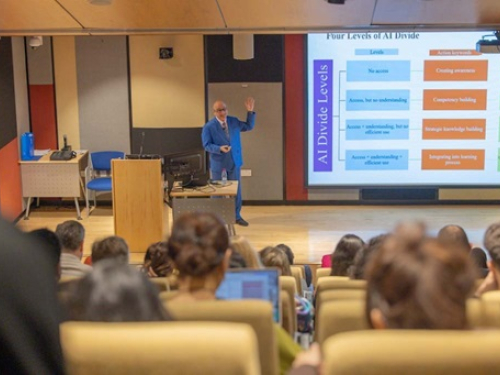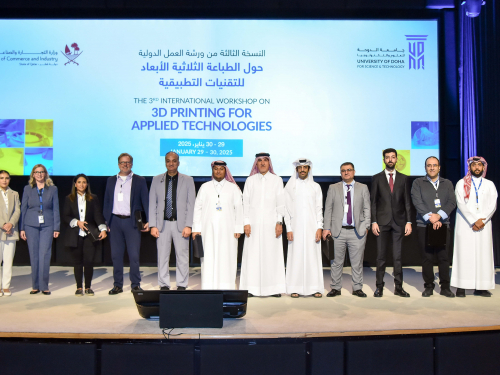
University of Doha for Science and Technology (UDST) has inaugurated its first smart and sustainable greenhouse in the presence of His Excellency Dr. Abdulla bin Abdulaziz bin Turki Al Subaie, Minister of Municipality; Dr. Salem Al-Naemi, UDST’s President, Dr. Rachid Benlamri, Vice President Academic Affairs; Dr. Awni Al-Otoom, Dean of School of Engineering Technology and Industrial Trades and many stakeholders including management and faculty members.
The smart and sustainable greenhouse is the result of extensive research, experimentation, and development led by faculty and students at the University’s School of Engineering Technology and Industrial Trades. It is an important advancement in controlled agriculture, creating a self-regulating, microclimate suitable for plant growth through the use of sensors, actuators, and monitoring and control systems that optimize growth conditions and automate the growing process. This is not the first time that UDST achieves an advancement in science and technology; the University’s core approach focuses on applied learning in technology-rich classrooms and laboratories, allowing students to discover new concepts and learn how to use their potential to the fullest for the betterment and development of the country.
Commenting on this initiative, Dr. Salem Al-Naemi said: “We are pleased to witness today an innovation that brings together conventional agricultural systems and new technologies—specifically automation—at the service of sustainability. UDST has been a proud supporter of research and an avid promoter of sustainability and green energy. We aim to serve our country and its national vision, specifically the environmental pillar that seeks to strike a balance between meeting our development needs and protecting the environment.”
Dr. Awni Al-Otoom said: “We are proud of this great achievement; a smart greenhouse helps pinpoint inefficiencies and combat issues that have long plagued farming operations to protect crops and maximize yields. The smart sustainable greenhouse at UDST completely utilizes solar energy generated by the photovoltaic system to power utilities inside the greenhouse, including cooling, irrigation, and controlling the light intensity. The water used for cleaning the solar panel is collected, the water condensed from the air conditioning system, and the excess water from planting pots are recycled, treated, and used again for irrigation.”
The smart greenhouse is run autonomously, controlling the moisture content of the planting substrate through the controlled irrigation system. It also regulates the temperature, humidity, and light intensity inside the greenhouse through controlled blinds. The greenhouse generates green hydrogen, which helps in seed germination and planting, through the utilization of solar energy to perform the electrolysis of water. The smart sustainable greenhouse is considered a concept model that students and faculty can utilize to apply innovative projects to improve sustainability, viability, and the development of agricultural processes in climates such as in the State of Qatar and elsewhere. For example, different campsite materials were also produced by students from different types of waste and used to plant vegetables in this greenhouse.



